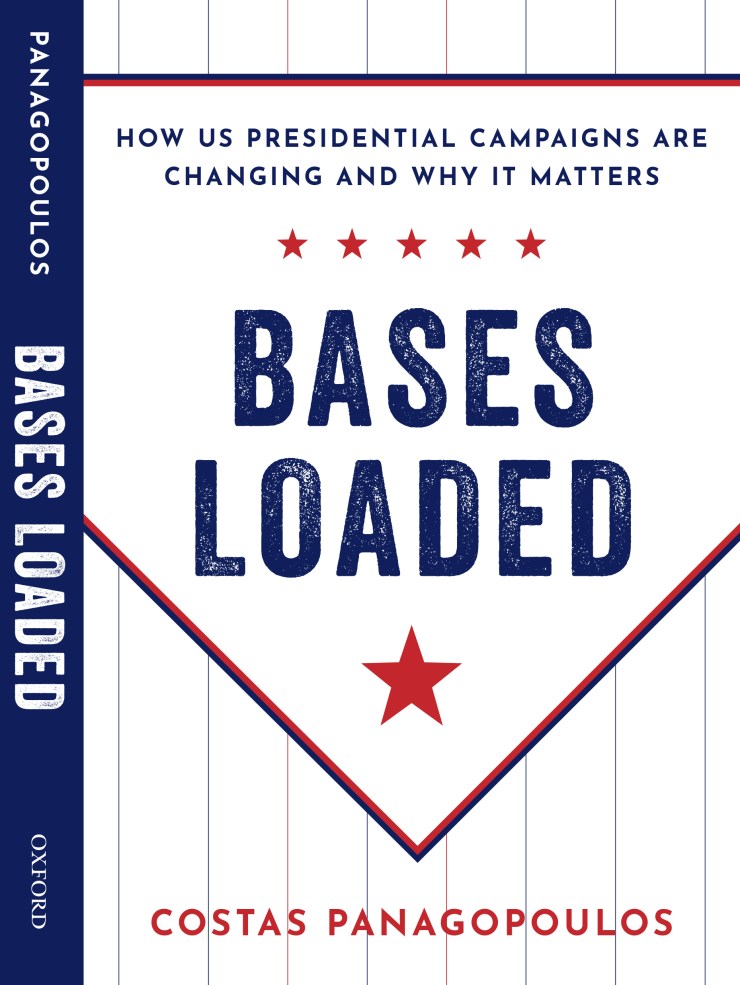Trump, Biden likely to focus on energizing core supporters more so than undecideds in first presidential debate

Expect President Trump and Democratic challenger Joe Biden to use Tuesday’s debate to excite their bases of supporters, rather than try to woo a shrinking pool of independent voters, according to a Northeastern University professor who has been tracking presidential candidates’ increasing focus on partisanship.
When Trump and Biden take the stage in Cleveland for the first of three head-to-head meetings, they will likely tailor their pitches to voters who long ago made up their minds, a detectable shift in campaign strategy over the last several election cycles that prioritizes mobilizing likely supporters who are “sure-bets” over the riskier approach of persuading those still on the fence.

Costas Panagopoulos is a professor of political science, and the chair of the Department of Political Science in the College of Social Sciences and Humanities. Photo by Matthew Modoono/Northeastern University
The move away from showering attention on political independents has a lot to do with technology that allows campaigns to micro-target supporters down to where they live, said Costas Panagopoulos, chair of Northeastern’s Department of Political Science.
Panagopoulos’s new book, “Bases Loaded: How US Presidential Campaigns Are Changing and Why It Matters,” examines election data since the 1950s and connects it to insights gained from behavioral social science.
Election strategists have found that suggests that persuasion is difficult to achieve in political campaigns, Panagopoulos said, and driving supporters to the polls is relatively easier.
“Faced with having to achieve a two-step process of persuading voters and then mobilizing them to vote, it might be more efficient for campaigns to identify likely supporters and then to focus on mobilizing them,” Panagopoulos said.
In 2000, the race between Republican George W. Bush and Democrat Al Gore accelerated the partisan-centric strategy, thanks to coming-of-age of voter registration databases and the huge reams of data that campaigns could glean from them, according to Panagopoulos.
Advances in digital communication fundamentally changed the political and media landscape, too. Email, then social media, helps campaigns target segments of the electorate and communicate directly to them on an individual level in ways that were not possible before.
Coincidentally, the 2000 election was also an incredibly close presidential race that was decided by just 537 votes out of six million cast in Florida.
That campaign two decades ago reflected a closely divided electorate and indicated that a White House contest could be decided by a few percentage points.
“That reality has persisted since the 2000 election, and it has raised the stakes for both major parties,” said Panagopoulos. “Such close contests activate partisanship in the electorate.”

Photo courtesy of Costas Panagopoulos
His book points out that recent presidential elections have been much closer than they had been in previous decades, often decided by slim margins.
Turning out their respective partisans has worked well for Democrats and Republicans, with Bush winning re-election in 2004, Barack Obama in 2008 and 2012, and Trump in 2016.
“Trump has made focusing on his base a hallmark not only of both of his presidential campaigns, but also of the governing process in a way that few of his predecessors ever had. Biden, too, will focus on the Democratic base, but not to the extent that Trump has or that I expect Trump will,” Panagopoulos said.
But the strategy won’t necessarily guarantee victory.
“I don’t argue in the book that focusing on the base wins elections, but rather that it might be sufficient in closely contested presidential races, especially because campaigns need to allocate scarce resources strategically where they will do the most good,” Panagopoulos added.
That is what will make the next five weeks so important to the Trump and Biden campaigns. It all comes down to motivating the core.
The president’s Supreme Court pick, conservative federal Judge Amy Coney Barrett, will likely rile up both Democrats and Republicans, predicted Panagopoulos, noting that some studies have suggested Republicans are much more motivated to vote on the basis of high court nominees.
Recent polling, however, tells a different story.
“In this particular election cycle, surveys suggest Democrats are at least as energized about Supreme Court appointments, compared to Republicans, if not more so,” Panagopoulos said.
The book goes on sale Oct. 14, the day before the second presidential debate in Miami.
For media inquiries, please contact media@northeastern.edu.





